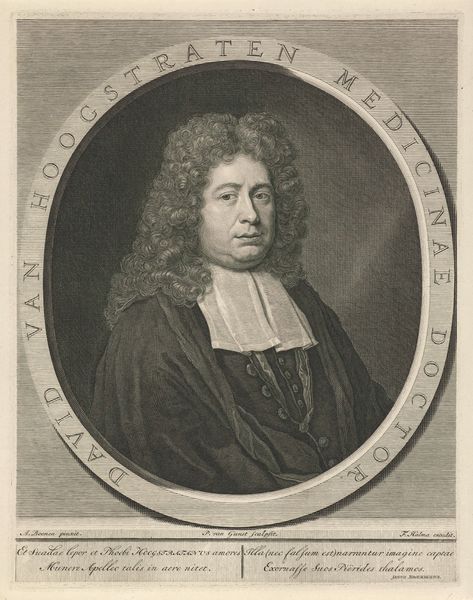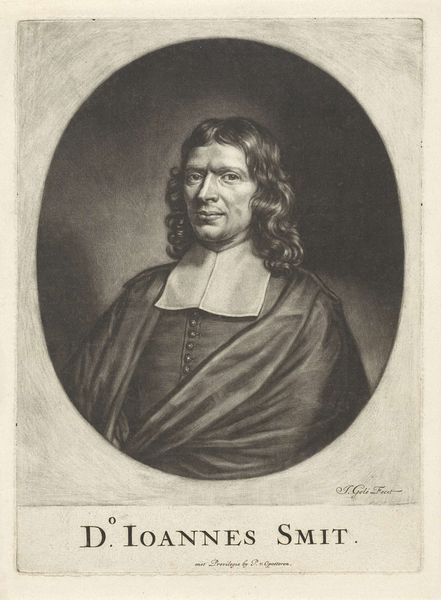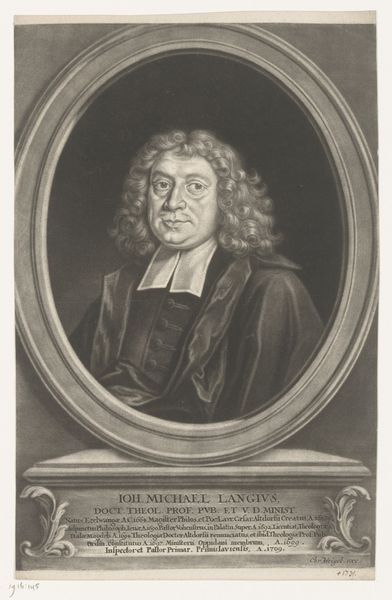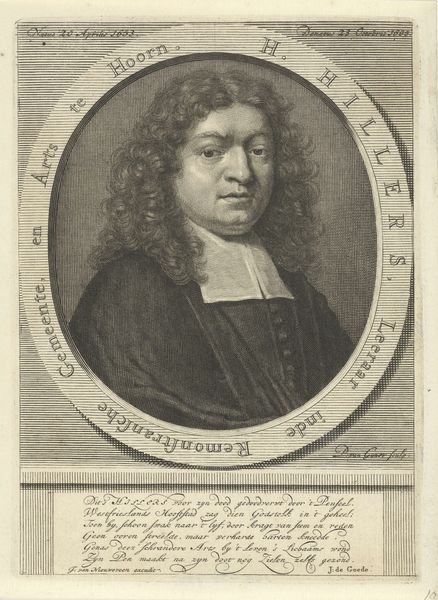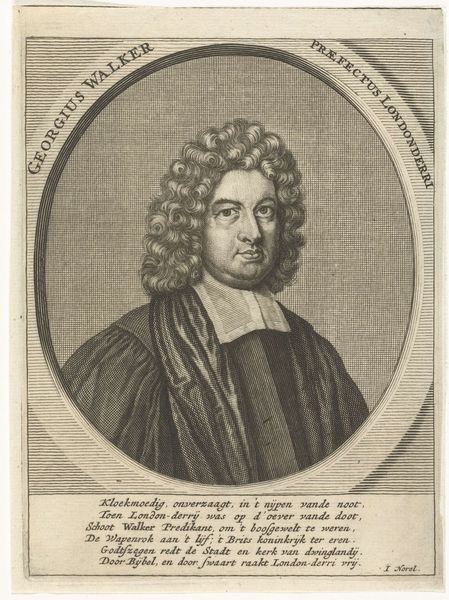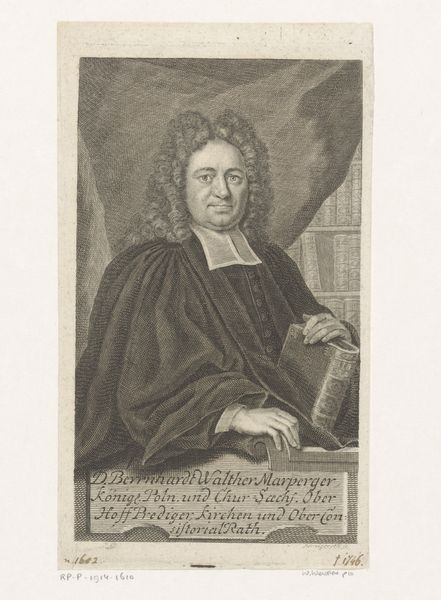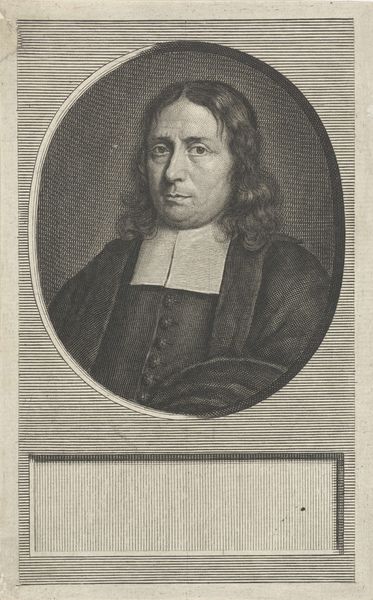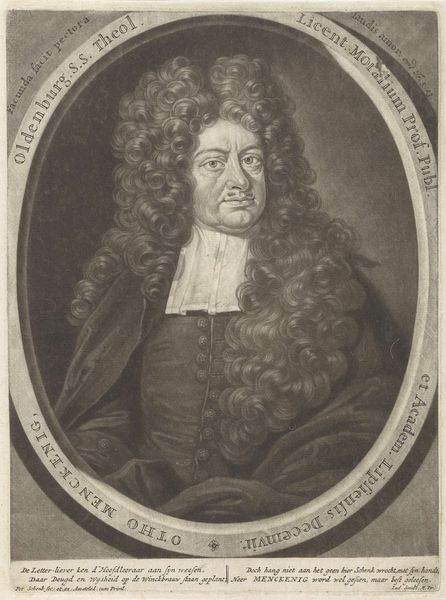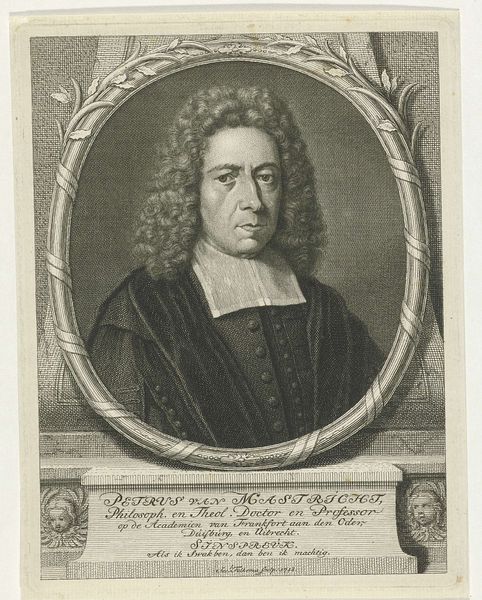
engraving
#
portrait
#
baroque
#
engraving
Dimensions: height 275 mm, width 195 mm
Copyright: Rijks Museum: Open Domain
Curator: Look at the density of line! This engraving, "Portret van Willem Hattum", crafted in 1695 by Anthony van Zijlvelt, it's amazing to see the minute detailing brought to life with such sharp contrasts. Editor: Yes, it certainly presents a stately presence. The stark black and white, the enclosed oval framing... it gives the impression of a very controlled, deliberate image. A mood of reserved authority emanates from the piece, don’t you think? Curator: Undoubtedly! What strikes me immediately is the socioeconomic implications of this medium. Engraving was often commissioned—it was a process that signified investment and permanence, suggesting a certain societal standing of the subject. A marker of material culture. Editor: From a formal perspective, the portrait is quite intriguing. Observe the use of line weight to define form, particularly around the subject’s face and the intricate lace detail of his collar. Van Zijlvelt manages to capture texture through the crosshatching and varied mark-making techniques which were signatures of Baroque prints at this time. Curator: And think of the role Hattum himself would have played, the commissioning patron. Understanding the modes of Baroque prints at the end of the 17th century reveals a connection of knowledge networks and financial ability between sitter and printmaker. This image exists because of a transaction, a desire for representation and remembrance. Editor: Representation it certainly achieves. The play of light and shadow, so effectively rendered, almost seems to sculpt Hattum's features. We're guided around his face and garments, even by the lettering on the bottom placard that forms part of the overall aesthetic balance. It almost evokes a silent narrative. Curator: Absolutely, and I am drawn into how these images helped disseminate not just images but notions of social hierarchies. Editor: A collaboration of skilled labor, the distribution of printed portraits undoubtedly played an integral role in shaping Baroque society’s understanding of notability. A compelling work viewed through varied critical lenses. Curator: Exactly. Each level highlights a different aspect. I think this offers a glimpse of a complex relationship, a reflection of Dutch society viewed via class and skilled craft.
Comments
No comments
Be the first to comment and join the conversation on the ultimate creative platform.
